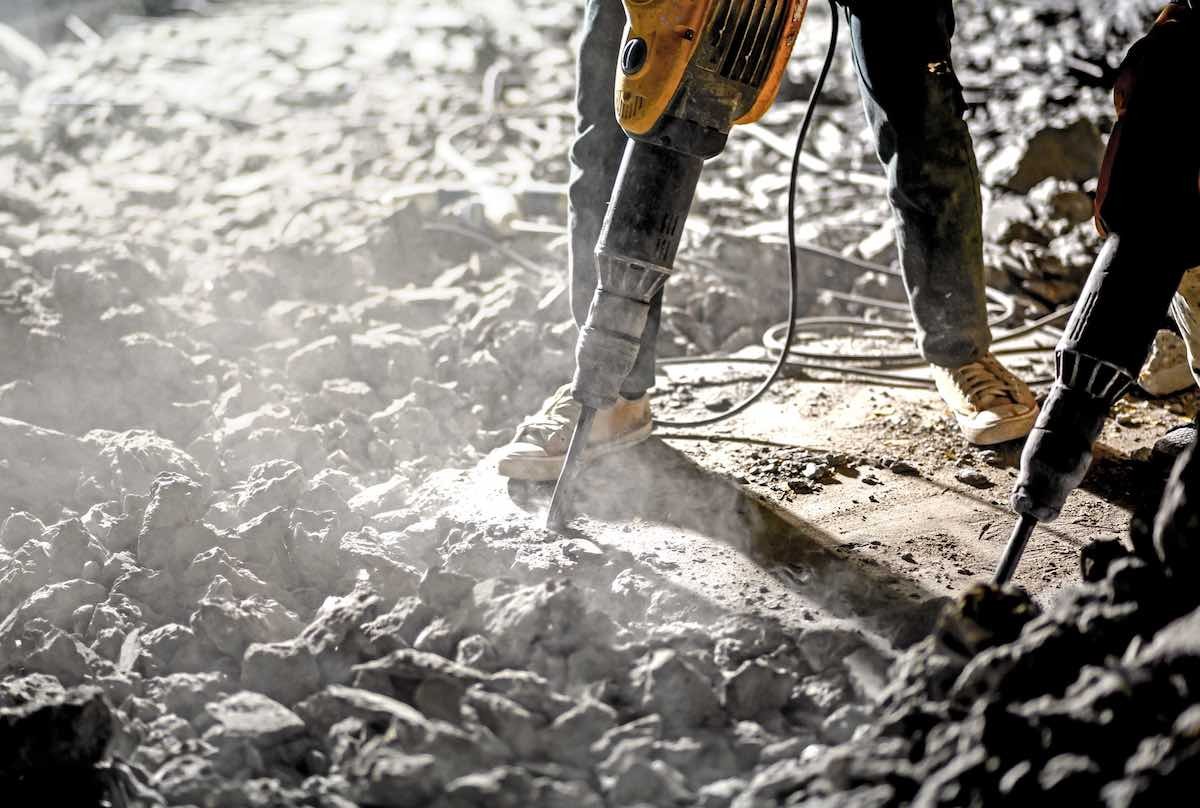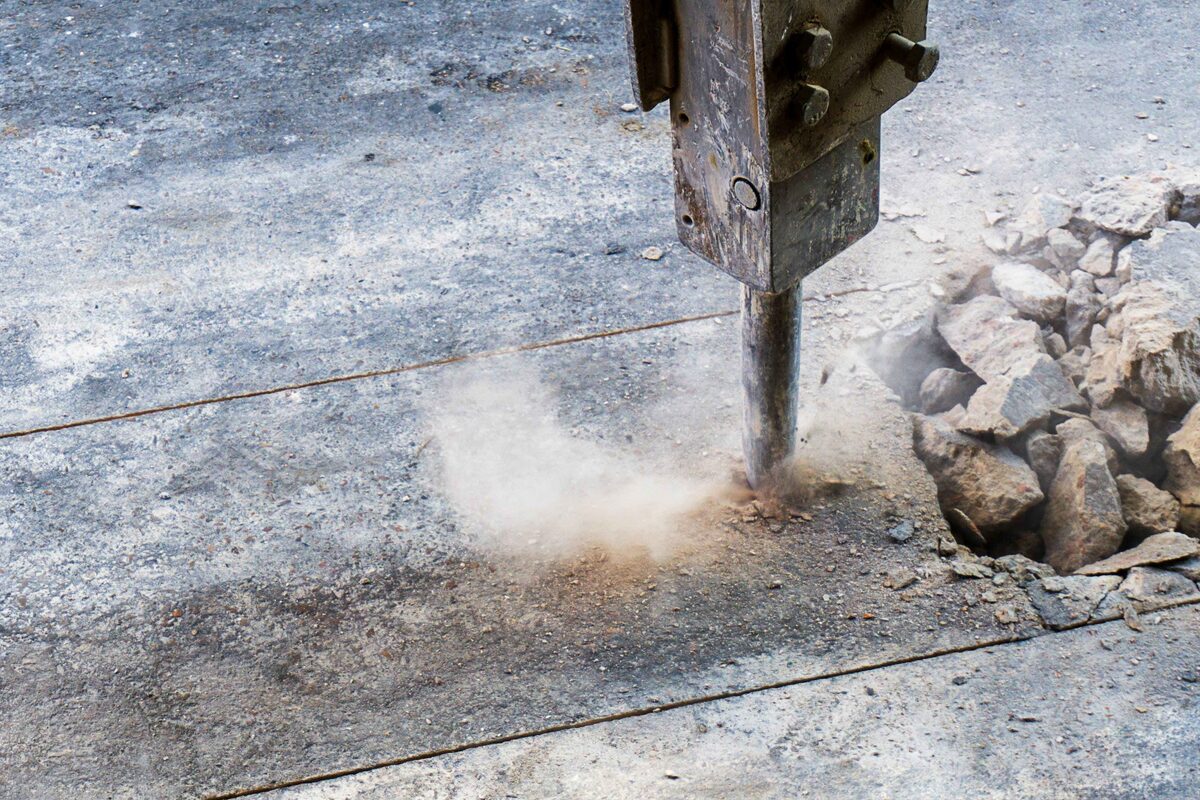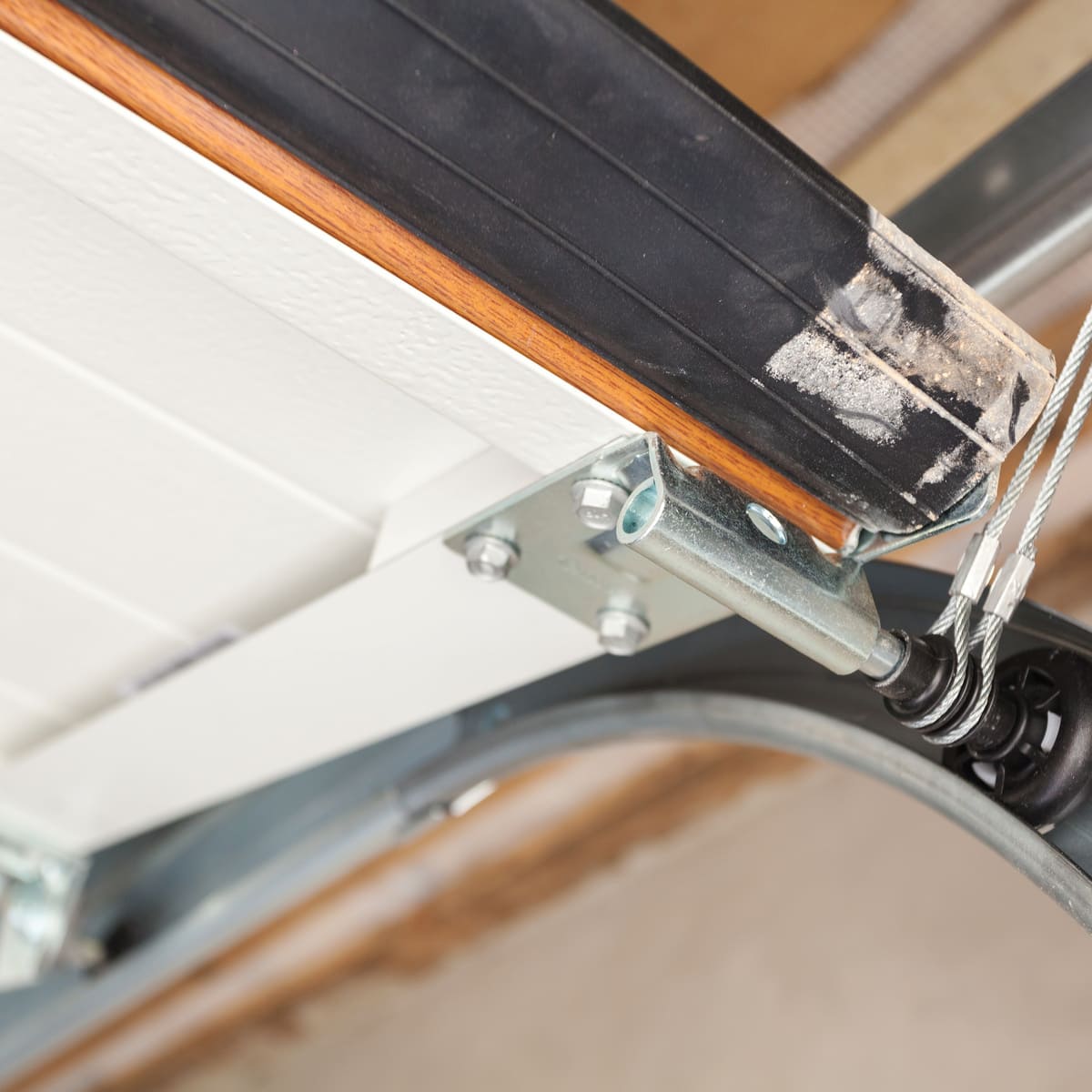Home>diy>Building & Construction>How Loud Is The Construction Noise


Building & Construction
How Loud Is The Construction Noise
Modified: January 9, 2024
Discover how loud building construction noise can be and how it affects the environment and nearby residents. Learn tips to mitigate the impact of construction noise.
(Many of the links in this article redirect to a specific reviewed product. Your purchase of these products through affiliate links helps to generate commission for Storables.com, at no extra cost. Learn more)
Introduction
Construction is a vital part of our society, shaping the infrastructure and buildings that we rely on for our daily lives. However, along with the many benefits of construction comes the inevitable downside: noise. Construction noise can be a significant annoyance for nearby residents, disrupting sleep, causing stress, and impacting overall quality of life.
In this article, we will explore the impact of construction noise on individuals and communities, as well as the regulations and standards in place to mitigate excessive noise. We will also discuss the factors that contribute to construction noise levels and provide insights into how we can minimize the impact on people’s health and wellbeing.
It is essential to understand that construction noise is not just an inconvenience but can have severe consequences on both physical and mental health. Excessive noise exposure has been linked to hearing loss, elevated blood pressure, sleep disturbances, and increased stress levels. It can also negatively affect children’s cognitive development and disrupt the learning process.
While construction noise is inevitable during building projects, it is crucial to find ways to minimize its impact. This involves considering various factors that contribute to noise levels, implementing regulations and standards, and actively seeking innovative solutions to reduce construction noise.
Additionally, it is essential to strike a balance between the need for construction and the well-being of those affected by the resulting noise. By understanding the causes and effects of construction noise, we can work towards creating a more harmonious environment where construction projects can coexist with residential and commercial areas without causing excessive disruption.
In the following sections, we will explore the different factors that contribute to construction noise levels, the regulations and standards in place to control noise, and the potential solutions available to mitigate construction noise. By gaining a deeper understanding of construction noise and its impact, we can work towards a future where construction projects can harmoniously coexist with nearby communities.
Key Takeaways:
- Construction noise can have severe consequences on health and well-being, including sleep disturbances, stress, and potential long-term health issues. Mitigating measures such as noise barriers and worker training are crucial for minimizing its impact.
- Understanding the factors contributing to construction noise levels and adhering to regulations and standards are essential for creating a harmonious environment where construction projects coexist with nearby communities. Implementing innovative construction methods and continuous improvement in noise control practices can significantly reduce noise impact.
Read more: Why Is My Freezer Making A Loud Noise
Understanding Construction Noise
Construction noise refers to the sounds generated during the building, renovation, or demolition of structures. These noises can stem from various activities such as drilling, pounding, blasting, and the operation of heavy machinery. The intensity and duration of construction noise can vary significantly depending on the type and scale of the project.
One of the primary causes of construction noise is the use of heavy equipment and machinery. Vibrations and mechanical processes produce noise that can propagate over large distances. Additionally, construction activities involving drilling, cutting, and hammering generate high-intensity noise levels, further contributing to the overall noise pollution.
Another significant contributor to construction noise is the transportation of materials and equipment to and from the construction site. Large trucks and other vehicles involved in the construction process can generate substantial noise, especially during the loading and unloading processes. The constant movement and operation of these vehicles can be a significant source of noise pollution in and around construction sites.
Furthermore, the type of construction materials used can also impact the level of noise generated. For example, the installation of metal structures or the use of metal tools and equipment can produce louder and sharper noises compared to other materials.
It is important to note that construction noise is not limited to the immediate vicinity of the worksite. The sound waves generated by construction activities can travel through the air and vibrate through the ground, potentially impacting a larger surrounding area. This means that even residents several blocks away may be subjected to the noise produced by nearby construction projects.
Construction noise can be particularly disruptive in urban areas where buildings are in close proximity to residences, businesses, and schools. The high population density combined with the constant construction activity amplifies the impact of noise on the local community.
Understanding the various sources and characteristics of construction noise is crucial in developing effective strategies to minimize its impact. By identifying the primary contributors to construction noise, we can focus our efforts on implementing appropriate measures and technologies to mitigate its effects.
Factors Affecting Construction Noise Levels
Construction noise levels can be influenced by several factors. These factors can vary depending on the type of construction activity, location, and surrounding environment. By understanding these factors, we can better assess the potential noise impact and implement appropriate measures to mitigate excessive noise. Here are some key factors that affect construction noise levels:
- Construction Methods: The methods and techniques used in construction can significantly impact noise levels. For example, modern construction techniques may employ quieter equipment and tools compared to older, more traditional methods.
- Duration and Timing: The duration and timing of construction activities can also affect noise levels. Long-term projects can result in consistent noise exposure over an extended period of time, leading to greater annoyance for nearby residents. Similarly, construction activities during late hours or early morning may create additional disturbances.
- Location: The location of the construction site plays a crucial role in noise propagation. Construction activities in crowded urban areas can amplify noise levels due to the presence of high-rise buildings that reflect sound. Similarly, projects located near sensitive areas like hospitals, schools, and residential neighborhoods may require additional noise mitigation measures.
- Type and Size of Equipment: The type and size of construction equipment used can significantly impact noise levels. Heavy machinery such as excavators, bulldozers, and pile drivers tend to produce louder noise compared to smaller tools. The proper selection and maintenance of equipment can help minimize noise emissions.
- Materials and Construction Techniques: The choice of materials and construction techniques can influence noise levels. For example, the installation of sound-absorbing materials or the use of quieter construction methods can help reduce noise propagation.
- Worker Training and Behavior: Proper training and adherence to best practices by construction workers can contribute to noise reduction. Educating workers about noise control measures and encouraging considerate behavior can help minimize unnecessary noise.
- Weather Conditions: Weather conditions can affect the propagation of construction noise. Windy conditions can disperse sound more effectively, while calm days may allow noise to travel further. Understanding the impact of weather conditions can help in planning construction activities accordingly.
- Noise Barriers and Mitigation Measures: The implementation of noise barriers, such as acoustic fencing or temporary enclosures, can help contain and absorb construction noise. Additionally, using quieter equipment, enforcing noise control regulations, and maintaining proper working practices can help effectively mitigate construction noise.
By considering these factors and implementing appropriate measures, construction stakeholders can work together to minimize the impact of noise on nearby communities and ensure a more harmonious coexistence between construction activities and the surrounding environment.
Regulations and Standards for Construction Noise
Construction noise is recognized as a potential nuisance and health hazard, leading to the implementation of regulations and standards to control and mitigate excessive noise levels. These regulations aim to strike a balance between facilitating necessary construction activities and protecting the well-being of individuals and communities affected by construction noise.
Regulations regarding construction noise can vary from region to region and may be enforced by local government bodies or environmental agencies. These regulations typically specify permissible noise levels and establish guidelines for noise management during construction projects.
One common regulation is the establishment of noise limits during different times of the day. For example, many municipalities have zoning regulations that specify lower noise limits during evening and night hours to minimize disturbance to residents during their restful hours.
Regulations may also require the use of specific noise control measures and technologies to mitigate the impact of construction noise. These measures can include the use of noise barriers, enclosures, and the implementation of proper equipment maintenance and operational practices.
Furthermore, construction projects are often required to obtain permits or approvals before commencing work. As part of the permitting process, noise impact assessments may be conducted to evaluate the potential noise levels and propose appropriate noise control measures. These assessments help ensure that construction activities comply with local regulations and address any concerns raised by nearby residents or businesses.
Aside from regulations, certain standards and guidelines have been developed to provide best practices for managing construction noise. These standards are often developed by professional organizations, regulatory bodies, or environmental agencies and serve as a reference for industry professionals.
For instance, the International Organization for Standardization (ISO) has developed ISO 9613, which provides guidelines for predicting the propagation of construction noise and assessing its impact on surrounding areas. These standards help stakeholders in the construction industry better understand the potential noise impact and implement appropriate mitigation measures.
By adhering to the regulations and standards in place, construction companies can ensure that their activities align with noise control requirements, minimizing the disruption caused by excessive noise and protecting the well-being of nearby residents.
It is crucial for construction stakeholders to remain aware of the specific regulations and standards applicable to their region and ensure compliance throughout the duration of the project. This proactive approach to noise management not only helps prevent legal issues and penalties but also contributes to fostering positive community relations and maintaining a sustainable construction environment.
Wearing ear protection, such as earplugs or noise-cancelling headphones, can help reduce the impact of loud construction noise on your ears.
Impact of Construction Noise on Health and Well-being
The impact of construction noise on health and well-being is a growing concern as urban areas continue to experience significant development and construction activities. Prolonged exposure to construction noise can have both short-term and long-term effects on individuals’ physical and mental well-being.
One immediate effect of construction noise is its ability to cause annoyance and disrupt daily activities. Continuous exposure to loud noise can lead to increased stress levels, irritability, and difficulty concentrating. These effects can be particularly pronounced for individuals, such as children, the elderly, and those with pre-existing health conditions.
The noise from construction sites can also disturb sleep patterns, leading to sleep deprivation and fatigue. Restful sleep is essential for overall health and cognitive function, so ongoing disruptions due to construction noise can have significant implications for individuals’ well-being.
Furthermore, studies have shown a connection between long-term exposure to excessive noise and various health issues. Chronic exposure to construction noise has been associated with an increased risk of cardiovascular problems, including high blood pressure, heart disease, and stroke. It can also contribute to the development of hearing loss or tinnitus, a ringing or buzzing sensation in the ears.
Construction noise can have a particularly detrimental impact on children’s health and development. Exposure to excessive noise during critical periods of learning and development can impede cognitive functioning, including reading comprehension, memory retention, and problem-solving skills. It can also lead to behavioral issues and hinder academic performance.
Additionally, the noise from construction sites can disrupt the tranquility of residential areas and negatively affect the perceived quality of life for nearby residents. It can diminish the enjoyment of outdoor spaces, increase feelings of social isolation, and lower overall satisfaction with their living environment.
Furthermore, construction noise can have economic implications, especially for businesses located near construction zones. Excessive noise can deter customers, disrupt employee productivity, and impact the bottom line for small businesses.
Recognizing the adverse effects of construction noise on health and well-being, it is crucial to implement effective noise mitigation measures. This can include the use of noise barriers, implementing quieter construction equipment, scheduling construction activities during off-peak hours, and ensuring compliance with noise regulations and standards.
Community engagement and proactive communication between construction companies and nearby residents can also help minimize the impact of construction noise. By keeping residents informed about construction activities and expected noise levels, and promptly addressing any concerns or complaints, a more harmonious relationship can be fostered.
Ultimately, mitigating the impact of construction noise on health and well-being requires a collaborative effort from all stakeholders involved, including construction companies, regulatory bodies, and local communities. By working together, we can ensure that construction projects contribute to the overall well-being of individuals and communities while creating necessary infrastructure and buildings for a sustainable future.
Mitigating Construction Noise
Mitigating construction noise is crucial to minimize its impact on nearby communities and ensure a more harmonious coexistence between construction activities and the surrounding environment. The following are some effective strategies and measures that can be implemented to mitigate construction noise:
- Noise Barriers: Installing noise barriers, such as acoustic fencing or temporary enclosures, can help contain and absorb construction noise. These barriers act as a physical barrier, blocking the direct transmission of sound waves and reducing noise propagation to surrounding areas.
- Equipment Selection and Maintenance: Choosing quieter construction equipment and regularly maintaining machinery can significantly reduce noise emissions. Opting for electric or hybrid equipment, which tends to produce lower noise levels compared to diesel-powered machinery, can help minimize noise pollution.
- Noise Control Technology: Utilizing noise control technologies can effectively reduce construction noise. This includes the use of noise-reducing devices and attachments, such as mufflers for machinery and silencers for ventilation systems. Implementing vibration isolation techniques can also help reduce noise generated from the operation of heavy equipment.
- Work Scheduling: Carefully planning construction activities and scheduling noisy tasks during off-peak hours can help mitigate the impact on nearby residents. By avoiding noisy operations during early mornings, late evenings, and weekends, construction companies can minimize disturbances during residents’ restful hours.
- Worker Training and Noise Awareness: Educating construction workers about the importance of noise control and providing training on best practices can contribute to reducing noise emissions. Training programs should emphasize the proper use of equipment, the importance of maintaining quiet work practices, and considerate behavior around noise-sensitive areas.
- Community Engagement: Open communication and engagement with the local community can play a crucial role in mitigating construction noise. Providing advanced notice of upcoming construction activities, sharing information about expected noise levels and duration, and establishing a channel for residents to voice their concerns or complaints can help build positive relationships and address potential issues proactively.
- Regulations and Compliance: Adhering to noise regulations and standards is essential for effective noise mitigation. Construction companies should familiarize themselves with local noise regulations and implement measures to comply with permissible noise limits. Regular monitoring and auditing can ensure ongoing compliance and a proactive approach to noise management.
- Innovative Construction Methods: Exploring and implementing innovative construction methods that are inherently quieter can help reduce noise emissions. For example, the use of prefabrication techniques that minimize on-site construction or the adoption of modular construction methods can significantly reduce noise levels and duration of construction activity.
- Noise Monitoring and Feedback: Regularly monitoring and assessing noise levels during construction projects can provide valuable data on the effectiveness of noise mitigation measures. This data can help identify areas for improvement and guide adjustments to construction practices to further minimize noise impact.
- Continuous Improvement: Emphasizing a culture of continuous improvement and innovation in noise control measures is essential. By actively seeking new technologies, methods, and materials that can reduce construction noise, the industry can continually improve noise mitigation practices and minimize the impact on nearby communities.
By implementing these strategies and measures, construction companies can demonstrate their commitment to minimizing construction noise and its impact on the surrounding environment. This proactive approach not only benefits nearby residents and businesses but also contributes to long-term sustainability and positive community relations.
Conclusion
Construction noise is an unavoidable byproduct of building, renovation, and demolition activities. While construction is essential for the growth and development of our communities, it is crucial to recognize the impact of construction noise on the health and well-being of nearby residents. Excessive noise can lead to annoyance, stress, sleep disturbances, and various health issues.
Fortunately, there are several strategies and measures available to mitigate construction noise and create a more harmonious environment. Implementing noise barriers, utilizing quieter equipment, scheduling construction activities thoughtfully, and maintaining compliance with noise regulations are just a few of the approaches that can significantly reduce noise levels.
Worker training, community engagement, and continuous improvement in noise control practices also play a crucial role in minimizing the impact of construction noise. By educating construction workers on best practices, actively engaging with the local community, and seeking innovative solutions, we can strike a balance between construction activities and the well-being of nearby residents.
Regulations and standards provide a framework to guide construction noise management, specifying permissible noise levels and requiring the implementation of noise control measures. Adhering to these regulations not only helps prevent legal issues but also promotes sustainable construction practices and positive community relations.
It is important for all stakeholders involved in construction projects, including construction companies, regulatory bodies, and local communities, to work collaboratively towards effective noise mitigation. By prioritizing the reduction of construction noise, we can create a more peaceful and healthy environment for everyone.
Ultimately, it is our responsibility to ensure that construction activities continue to contribute to the development of our communities while respecting the rights and well-being of individuals. By implementing holistic noise mitigation strategies, engaging with the local community, and continuously improving our practices, we can minimize the impact of construction noise and create a better future for all.
Frequently Asked Questions about How Loud Is The Construction Noise
Was this page helpful?
At Storables.com, we guarantee accurate and reliable information. Our content, validated by Expert Board Contributors, is crafted following stringent Editorial Policies. We're committed to providing you with well-researched, expert-backed insights for all your informational needs.















0 thoughts on “How Loud Is The Construction Noise”